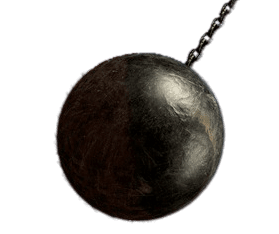Curmudgucation: Can Rich Content Improve Education?
Modern high-stakes testing really kicked into gear with No Child Left Behind, and then got another huge boost with the advent of Common Core. All through that era, teachers pushed back against the fracturing of reading instruction, the idea that reading is a suite of discrete skills that can be taught independent of any particular content.
The pendulum has begun its swing back. Content knowledge is coming back into vogue, and while there are plenty of cognitive science-heavy explanations out there, the basic idea is easy to grasp. If you know a lot about dinosaurs, you have an easier time reading and comprehending a book about dinosaurs. If you are trying to sound out an unfamiliar word on the page, it’s easier if you already know the word by sound. If you learn and store new information by connecting it to information you already have banked, that process is easier if you actually have plenty of information already stored away.
Classroom teachers have known this. Some have argued that the Common Core acknowledged this (but did so in the appendix, none of which is tested material). And while much of the education reform crowd joined the “skills” push (one attempted catchphrase of the new SAT created under Common Core creator David Coleman was “skilled it”), some reformers never lost faith in the work of Ed Hirsch, Jr., who has himself stayed committed to the idea through his Core Knowledge Foundation.
So if we restore rich content to education and provide students with a wealth of background knowledge, will that revitalize education and fix some of the issues that have plagued us? Or will this, like the great skills revolution at the beginning of the century, turn out to be a terribly misguided idea?
Well, both. Hirsch’s 1983 book, Cultural Literacy: What Every American Needs To Know, underlines two of the potential pitfalls of rich content in education.
First, consider the subtitle–what every American needs to know. If we had every single American compile a list, what are the odds that any two would match? English teachers especially are familiar with the problems of an ever changing canon. Kate Chopin was once a somewhat obscure U.S. writer; she’s now solidly in the canon. Alfred, Lord Tennyson was beloved, then reviled, then beloved. Someone is always looking to kick Shakespeare out of the canon, even as others will fight for him with their last breath. And somewhere, someone is at this very moment getting ready to correct me on one or all of those last three sentences.
Agreeing in what should make the cut is, as all English teachers well know, an endless wrangling debate. Any discussion about loading up rich content knowledge for students will be accompanied by an endless argument about what content will be included–and I do mean endless. This is not to argue that the attempt should not be made–only to point out that if you insist that nothing will do other than your exact list, you will never get it done at all. Not only that, but the list that seemed sort of okay this year will need fixing next year.
Second, there is a danger in having a list, particularly if the list is generated by a large committee. A teacher has 180 teaching days, minus days spent testing, minus days spent practice testing, minus days lost to a school assembly, minus days lost to being randomly pulled from class for a conference, minus time lost for procedural things like handing out lockers. A really, really generous estimate of actual teaching days would be 160. So at the rate of one item of critical rich content background knowledge per day, we can hit 160 items. But there is no such thing as “rich” content that will be learned by a student in one day.
One of two things may happen. Your list of crucial background knowledge may be radically reduced to, say, thirty items. Or the teacher will spend the year racing through and checking off a list (”Students! Please look at the front screen. That’s a picture of Plato, an old dead smart Greek guy. He wrote some stuff about a cave. Boom! Moving on to our next unit now...”).
There’s a further danger that the speedy check-off list approach finds bureaucratic expression in a big standardized test used to judge and compare schools. Such a standardized test would be a bad way to assess the richness of student achievement and education–different from our current bad tests, but still bad, and still incentivizing teaching the test, rather than to the richness of the content (Question 1: Plato is associated with A. a cave B. a boat C. a nation or D. the trombone).
Nearly twenty years of test-driven top-down education reform has hollowed out too much of our education system. A rich content focus can reverse some of that damage, particularly by reversing the practice of pulling students out of history and science classes so that they can spend more of their day practicing reading skills (you may think that sounds nuts, but a principal in my old district regularly did it, and he was not an anomaly in the U.S.). Students could read full works of literature instead of excerpts of bad articles. Students could experience the fun and excitement of becoming knowledgeable experts on particular topics.
But it would be a mistake not to recognize that a content knowledge movement could be botched in ways that do new, different kinds of damage to the education system of this country. As the pendulum swings back, we need to be careful that it doesn’t become a wrecking ball.
This blog post has been shared by permission from the author.
Readers wishing to comment on the content are encouraged to do so via the link to the original post.
Find the original post here:
The views expressed by the blogger are not necessarily those of NEPC.

